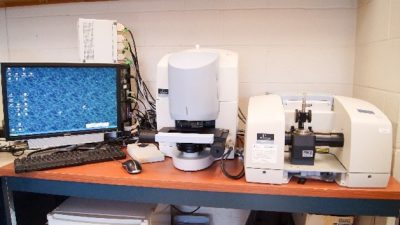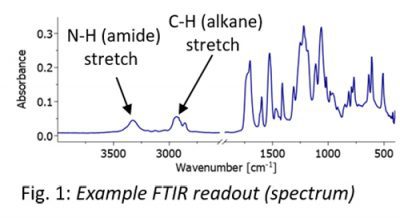

Available Methods and Accessories
- Spectrum 100 Bench + ZnS ATR
Sample Requirements
- Non-aqueous liquids or solids
- Sub-millimeter thickness required
Summary of Technique
A sample is illuminated with infrared light, the absorption of which causes molecular vibrations in the sample. These vibrations are characteristic of functional groups in the sample. A representative spectrum is shown to the left with some of the evident functional groups denoted. FTIR is not able to determine connectivity of functional groups.
Information Provided & Detection Limits
FTIR microscopy is capable of determining the major organic chemical species present in a sample, with a detection limit of 1-5% by weight. It is capable of resolving spectral changes throughout a sample through point, line and global scans at a scale of 6.25 microns or larger.
Lab Location and Contact Information
Lab Location: Science 1, G20
Lab Manager: Capri Price
capri.price@uconn.edu
860-486-5851